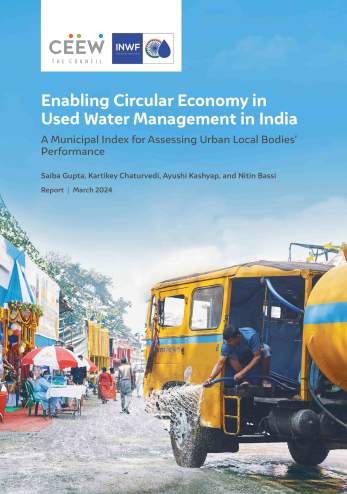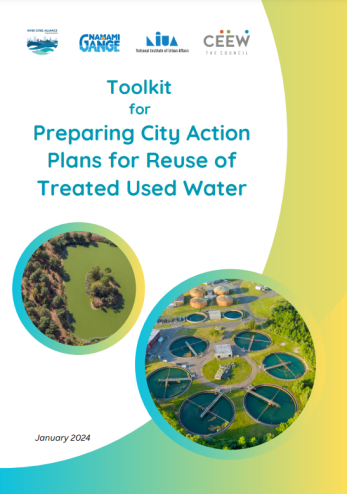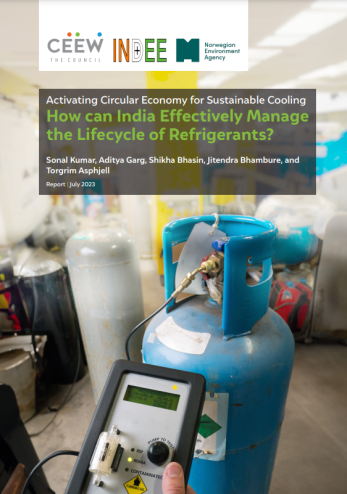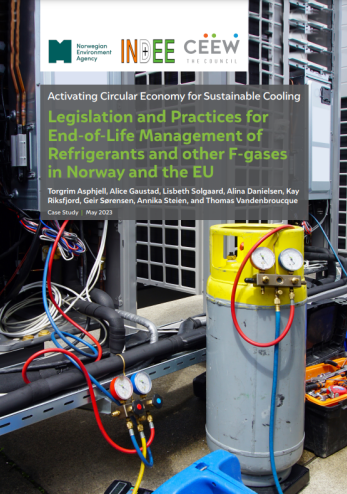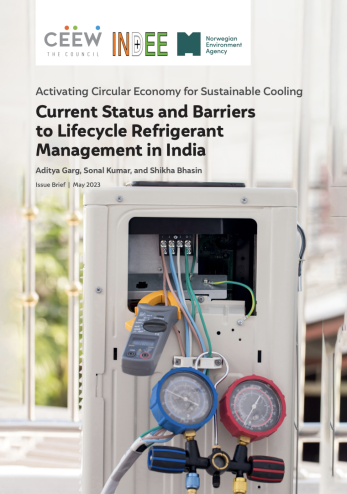Report
Circular Economy Pathways for Municipal Wastewater Management in India
A Practitioner’s Guide
Rudresh Sugam, Abhishek Jain, Kangkanika Neog
October 2016 | Circular Economy
Suggested Citation: Sugam, Rudresh Kumar and Kangkanika Neog. 2016. Circular Pathways for Municipal Wastewater Management in India: A Practitioner’s Guide. Washington: 2030 Water Resources Group.
Overview
This practitioner’s guide presents the global perception on the adoption of a circular economy pathway in the wastewater sector. It identifies relevant practices for India. It highlights critical factors that need assessment to come up with a wastewater management strategy. Further, it analyses 17 global good practices in the wastewater sector and provides a cost-benefit analysis of various technology choices. This report also highlights that India needs to make an investment in wastewater treatment though there are several risks associated with it. Further, it discusses the factors that will drive, facilitate and sustain wastewater management interventions in India.
Key Findings
- About 80 percent of water supply to municipalities flows back into the ecosystem as untreated wastewater, which is a critical environmental and health hazard.
- India has the capacity to treat approximately 20,000 million liters per day (MLD), against a daily sewage generation of approximately 57,000 MLD.
- Most wastewater treatment plants do not function at maximum capacity. They do not follow the standards prescribed under the environmental protection rules for discharge into streams.
- There are social, political, technical and financial challenges which have impacted efficient management of wastewater management plants and the sector as a whole.
- Instead of treating it as a waste to be disposed of, wastewater should be considered a resource for recycle and reuse. A paradigm shift from “use and throw” to a “use, treat, and reuse” approach is required.
- Untreated wastewater use for irrigation is a common practice in India. The annual health cost per child in an untreated wastewater irrigated environment is around Indian INR 4000 per annum, which is 73 percent higher than for freshwater irrigated areas.
- About 60 percent of major industries are impacted due to water scarcities. Wastewater treatment offers new economic opportunities for energy and fertilizer recovery.
- Water scarcity stands out as the major driver for initiating wastewater management.
- For the industries located in the water-scarce area, treated wastewater reuse could be a viable option as it could become a source of continual water supply.
- Wastewater can be a ready source of phosphorus as fertilizer.
- The targeted areas (for wastewater management system) should be places where water is scarce, water tariffs are high, groundwater is depleting or salinised, and where high-priced desalinated water is being used.
Key Recommendations
- Utilities and government authorities should integrate water and wastewater management at strategic, planning and implementation levels.
- Build awareness around wastewater management. The government can help in designing acceptable solutions, certifications, and authorisation. Also, financial institutions can help through long-term patient capital.
- Establish blended finance model or viability gap funding to boost public-private partnership, where the private sector could work under BOOT mode, sharing equal risks.
- The government should provide financial and land resources and create an enabling atmosphere for the wastewater management techniques.
In India, 20 percent of groundwater blocks are critical or overexploited, while untreated sewage flows amount to 37,000 MLD. By 2050, the freshwater abstraction by industries will be 10.1 percent. All these factors make a strong case for a circular economy pathway in the wastewater sector.




